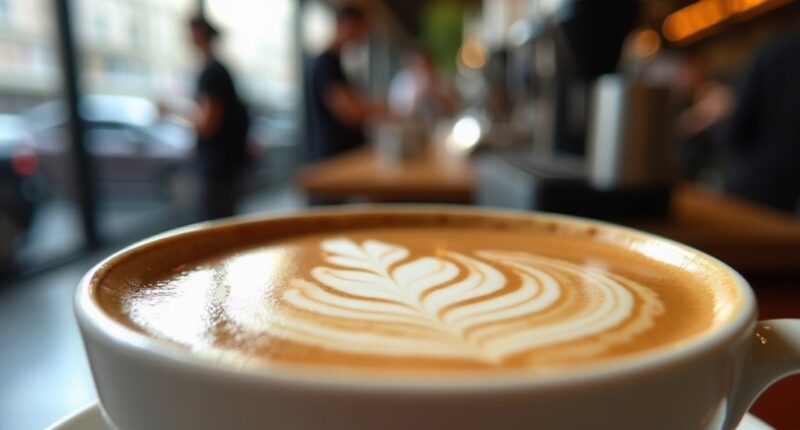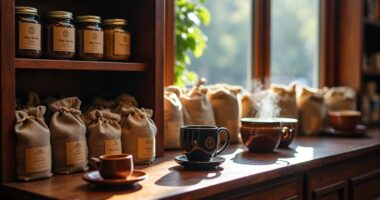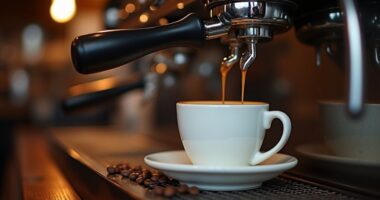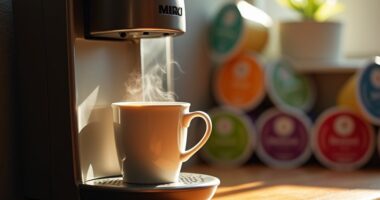If your latte tastes watery, it might be because you’re using too much milk or the coffee isn’t strong enough. Key things to check are your coffee-to-liquid ratios and grind size—too fine or too coarse can mess things up! Fresh ingredients matter too; old milk can ruin your drink faster than a bad joke. If you’re ready for some tips to nail that perfect latte, hang tight and keep going!
At a Glance
- An incorrect coffee-to-liquid ratio, such as too much milk relative to espresso, can dilute flavor intensity in your latte.
- Under-extraction from low water temperature or brief brewing time can lead to a sour and watery taste in your coffee.
- Using a grind size that is too fine can speed up extraction and create bitterness, while too coarse may result in weak coffee.
- Poor water quality and machine maintenance can affect extraction efficiency, leading to a disappointing latte flavor.
- Using old or low-quality milk can negatively impact the texture and richness, making your latte taste watery.
Incorrect Coffee-to-Liquid Ratios
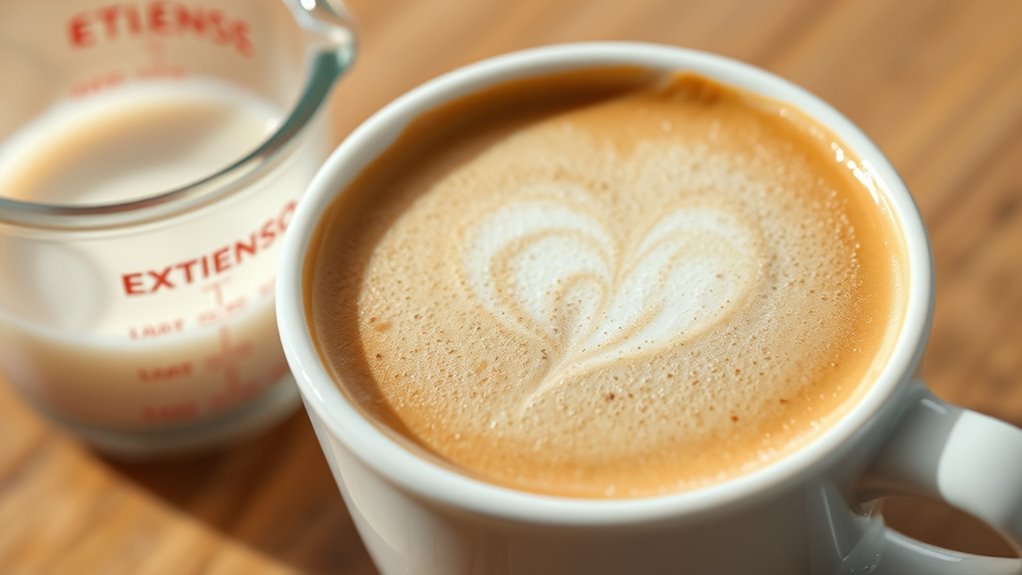
Have you ever taken a sip of your latte and thought, “Why does this taste like a watered-down version of coffee?”
Well, you might be dealing with the dreaded incorrect coffee-to-liquid ratio! When that milk overtakes the espresso, you lose latte balance and flavor intensity.
If your latte lacks flavor, it might be the milk overpowering the espresso—balance is key!
Imagine using too much milk—your 8 oz latte should ideally have 1 shot of espresso and about 6-7 oz of milk. Using a drip coffee maker can help ensure consistent extraction of flavors, enhancing your coffee experience.
Stick to those coffee ratios to keep your drink rich and creamy!
Next time you sip, remember: the right balance makes all the difference between a delightful latte and a watery disappointment!
Under-Extraction of Coffee
When your latte tastes more like a sour milkshake than a delicious coffee treat, you might be facing the sneaky issue of under-extraction.
This happens when your coffee grounds don’t release enough flavors due to low water temperature or short brewing time. You end up with a watery cup that’s all sharp acidity and none of that sweet, balanced goodness.
It’s like inviting a party guest who only talks about the weather! To fix it, heat your water right and let those grounds mingle longer.
For optimal results, aim for a water temperature around 195 to 205 degrees Fahrenheit to ensure proper extraction.
Trust me, your taste buds will thank you for that flavor balance!
Coffee Grind Size and Brewing Time
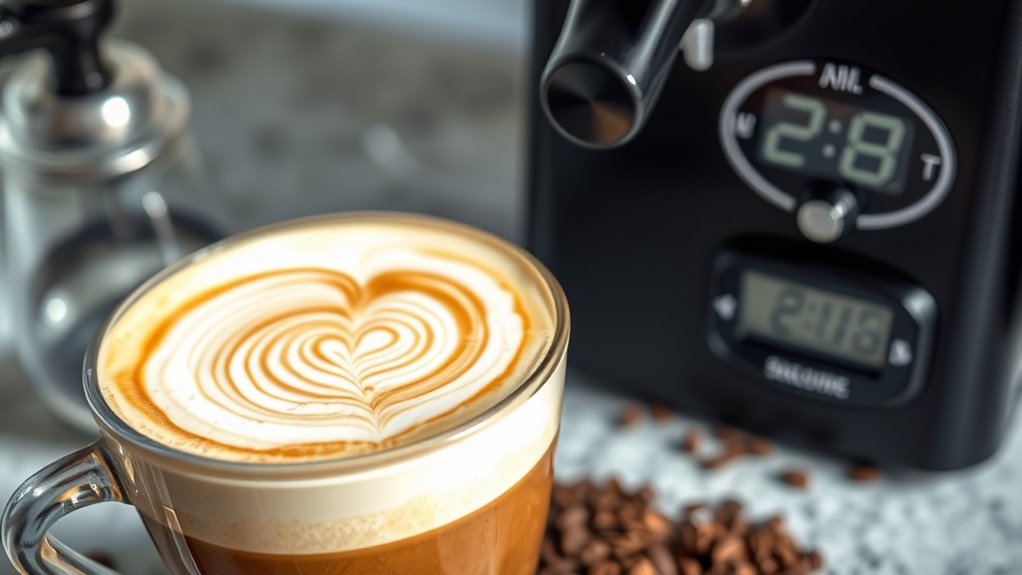
If you’ve ever taken a sip of your latte only to be met with a watery surprise, you might want to take a closer look at your grind size and brewing time.
A fine grind can speed up extraction, but if you brew too long, your coffee might taste bitter. On the flip side, coarser grinds need more time to extract flavor, or you risk a weak brew. Understanding grind size importance is crucial for achieving the perfect balance in your coffee’s flavor profile.
Water Quality and Machine Maintenance
While you might think the coffee itself is the star of your latte, the water quality and machine maintenance play a huge role, too!
Hard water brings scale buildup, which messes with extraction efficiency, leading to watery shots. Regular machine cleaning, like backflushing, keeps coffee oils at bay and guarantees even extraction.
Hard water causes scale buildup, disrupting extraction and resulting in weak shots; regular cleaning ensures optimal flavor.
Don’t forget about your steam wand; a quick purge and wipe can save you from off-flavors. Plus, filter maintenance is key—clogged filters mean weak coffee. The type of water you use can dramatically influence the taste, so opt for filtered or bottled water for the best results.
Embrace preventive maintenance, and your latte will thank you with rich, bold flavors instead of watery disappointments. Cheers to great coffee!
Milk Quality and Preparation
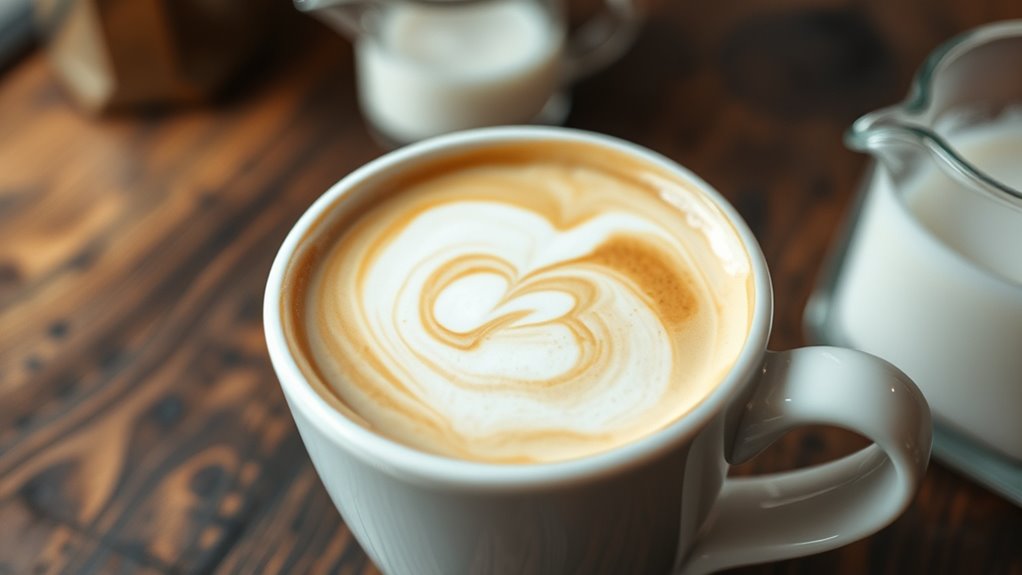
You mightn’t realize it, but the milk you choose can make or break your latte experience! Freshness is key; old milk can lead to a watery disaster.
Whole milk’s fat content gives your latte richness, while skim milk might just leave you disappointed.
And let’s not forget about steaming technique! Properly steamed milk creates that luscious microfoam we all love, making your drink feel silky smooth.
If you’re using plant-based milk, opt for creamier options like oat milk for a thicker texture. Additionally, consider that milk alternatives can vary significantly in flavor and texture, impacting your overall coffee experience.
Equipment Limitations and Technique
When it comes to crafting that perfect latte, the equipment you use can really make or break your coffee game. If your espresso machine’s pressure is too low, say below 7 bars, you’ll end up with watery shots. And trust me, nobody wants a sad latte!
Make sure your grinder’s dialed in too—too coarse or too fine can mess up extraction. Plus, don’t forget about temperature control; inconsistent temps lead to weak flavors. Additionally, investing in a quality grinder with adjustable grind settings can significantly enhance your coffee experience.
Adjusting Variables for a Balanced Latte
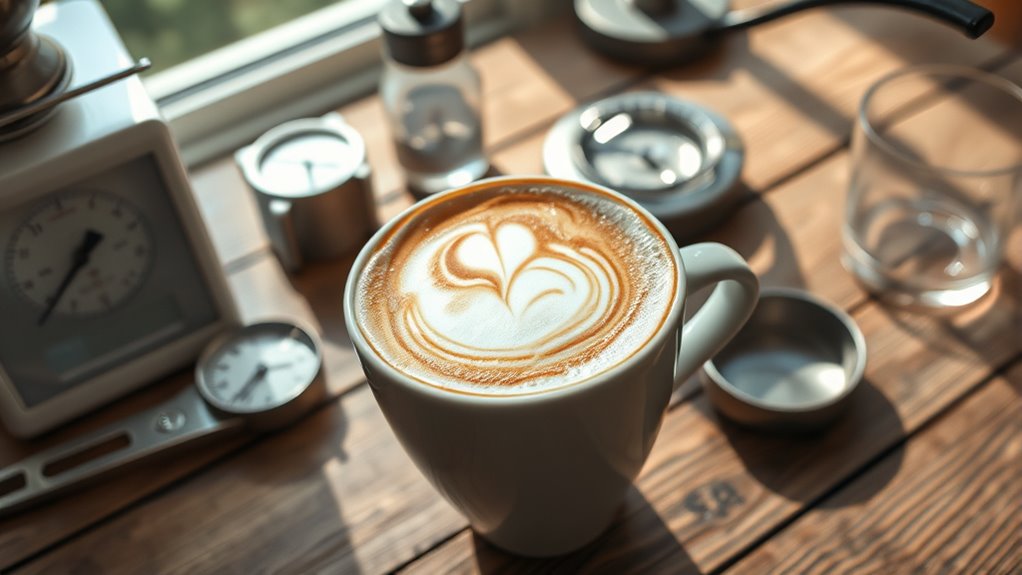
Crafting the perfect latte might just feel like a science experiment, but with a few simple adjustments, you can turn your coffee from watery to wonderfully rich!
Start by nailing that espresso intensity—aim for a 1:3 ratio of espresso to steamed milk.
Don’t forget about milk frothing; the right texture makes all the difference! Steaming milk to around 60-65°C will keep it creamy, while too much milk can drown your espresso flavor.
Play around with shot length and coffee grind to find your sweet spot. Trust me, your taste buds will thank you when your latte finally sings! Additionally, investing in a quality cappuccino machine can greatly enhance your brewing process and help achieve that rich flavor.
Common Mistakes to Avoid
Even the most seasoned barista can fall into some common traps when making lattes, and trust me, it happens to the best of us!
First off, nail that milk texture—too bubbly or too thin can totally ruin the vibe.
And when it comes to pouring technique, don’t rush! Pouring too fast can wash out that beautiful crema. Keep it steady, and don’t wait too long; you want that perfect integration!
Remember, it’s all about balance. So, avoid the watery fiasco by focusing on your milk and pouring skills. The right Ninja Coffee Maker can also help you achieve that perfect brew.
You got this—let’s make that latte shine!
